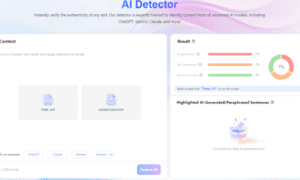The software-defined perimeter market is expected to increase at a CAGR of 14.3% from USD 7.4 billion in 2022 to USD 28.2 billion through 2032.
The increased need for policy-based security architecture to decrease network complexity and the growing demand for cloud-based applications are other factors expected to influence the software-defined perimeter market trends positively.
Cloud services are the main drivers of digital transformation, with the widespread adoption of software-defined perimeter across many businesses. It has presented several security problems to the organization, a major factor driving the global software-defined perimeter market development throughout the forecast period.
A network perimeter is dynamically constructed to secure data in the cloud, the demilitarized zone, and data centers. This is regarded as a fantastic software-defined perimeter strategy.
The software-defined perimeter adoption trends are accelerated by the rise of the IoT and shifting Bring Your Device (BYOD) tendencies to boost software-defined perimeter market future trends.
The use of cloud-based services has resulted in a reduction in network risks. Typical perimeter defensive solutions cannot defend traditional data centers and servers, increasing the possibility of network assaults on application infrastructure, thereby increasing the software-defined perimeter market opportunities.
The software-defined perimeter market growth and software-defined perimeter market opportunities are hampered by a lack of security awareness and industry standards.
The software-defined perimeter market share is dominated by the United States, which is regarded to be the most advanced area in terms of security, software-defined perimeter adoption trends, and infrastructure. Governments are working to provide a secure IT environment and safeguard critical information.
United States’ compliance management is strictly controlled. Businesses want flexible and agile security solutions as data centers become increasingly software-driven.
KEY TAKEAWAYS:
- The software-defined perimeter market in the United States is expected to reach US$ 10 billion by 2032, growing at a CAGR of 14.1% through 2032.
- By 2032, the software-defined perimeter market in the United Kingdom is predicted to be valued at US$ 1.2 billion, with a CAGR of 13.3% in 2032.
- With a CAGR of 14.1% through 2032, China’s software-defined perimeter market is predicted to reach US$ 2 billion.
- By 2032, the Japanese market for software-defined perimeter is estiinvolvedmated to be worth US$ 1.6 billion, growing at a 12.8% annual pace.
- With a CAGR of 11.8% through 2032, South Korea is predicted to attain a market size of US$ 1 billion in the software-defined perimeter.
- The software-defined perimeter market’s solutions segment from the component category is predicted to develop at a CAGR of 15.1% through 2032.
- Through 2032, the cloud in the software-defined perimeter market’s deployment mode sector will grow at a CAGR of 13.6% in 2032.
COMPETITIVE LANDSCAPE:
Check Point (Israel), Cisco, Akamai, Palo Alto Networks, Palo Alto Networks, Symantec, Okta, Proofpoint, Verizon, Fortinet, Intel, Perimeter 81, Safe-T, Pulse Secure, CloudPassage, Illumio, DH2i, Certes Networks, Trust.
Market players are involved in various strategies to consolidate their market position thereby enlarging their software-defined perimeter market share.
To extend their influence in the software-defined perimeter market trends, these vendors have used a variety of organic and inorganic growth tactics.
RECENT DEVELOPMENT:
A couple of recent developments in the software-defined perimeter market are as follows:
PRODUCT LAUNCH:
- Palo Alto Networks purchased Aporeto, a machine identity-based micro-segmentation firm, in December 2019. Prisma Cloud’s Palo Alto Networks Cloud-Native Security Platform would be strengthened by this purchase.
- Palo Alto Networks announced the debut of Prisma, a cloud security suite, in May 2019. Prisma was created to assist the company’s consumers in living a safer digital existence.
- Cisco purchased Duo Security in August 2018 to address a new security perimeter. Cisco’s position in the SDP market was improved by the purchase, which would advance Cisco’s intent-based networking strategy and extend endpoint visibility coverage.
INTEGRATION:
- Check Point purchased ForceNock, a Web Application and Application Program Interface (API) Security start-up, in January 2019 to integrate ForceNock’s technology into its Infinity comprehensive protection architecture.
For more information, refer to our market research report or contact the Analyst.





























